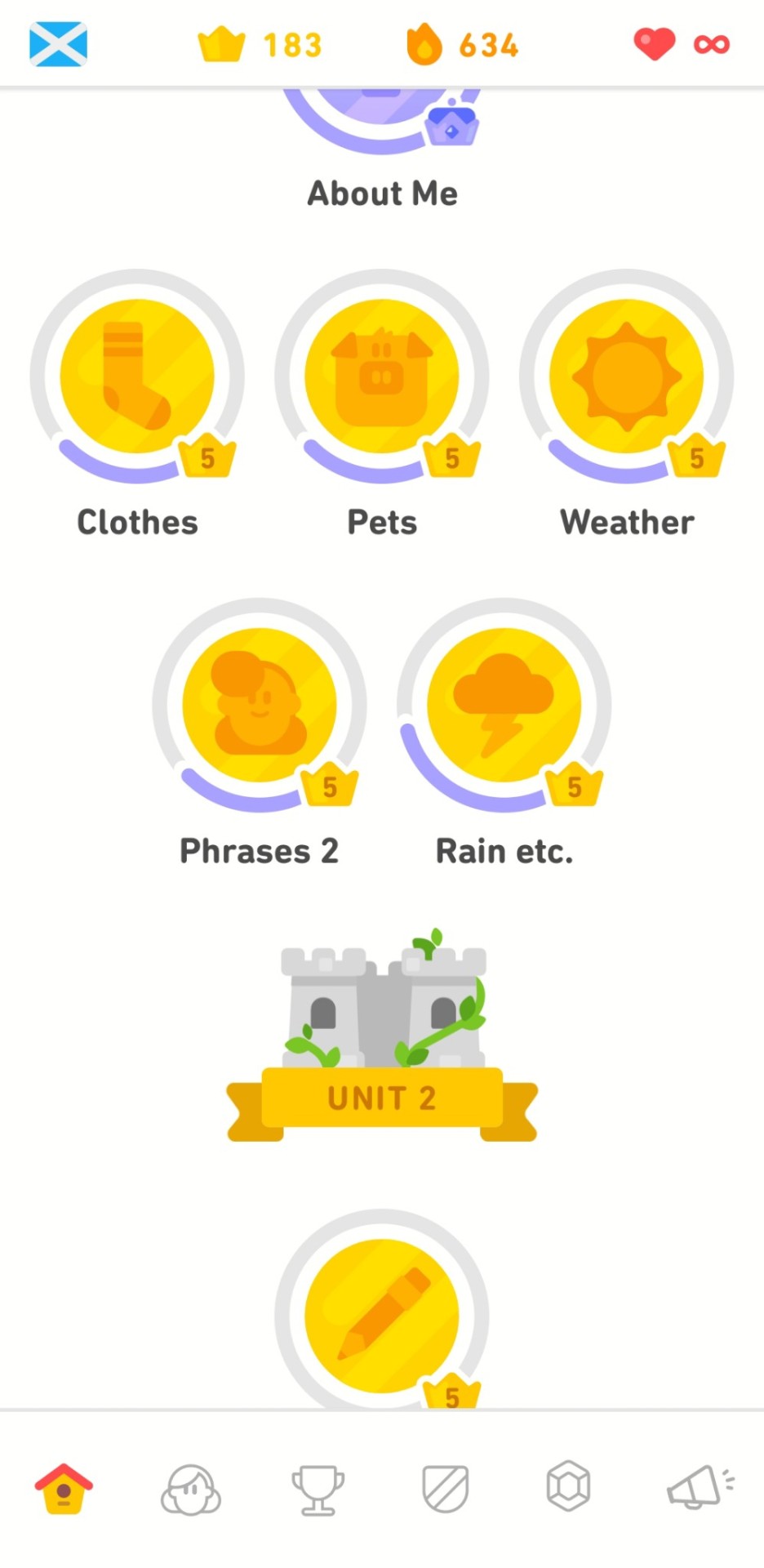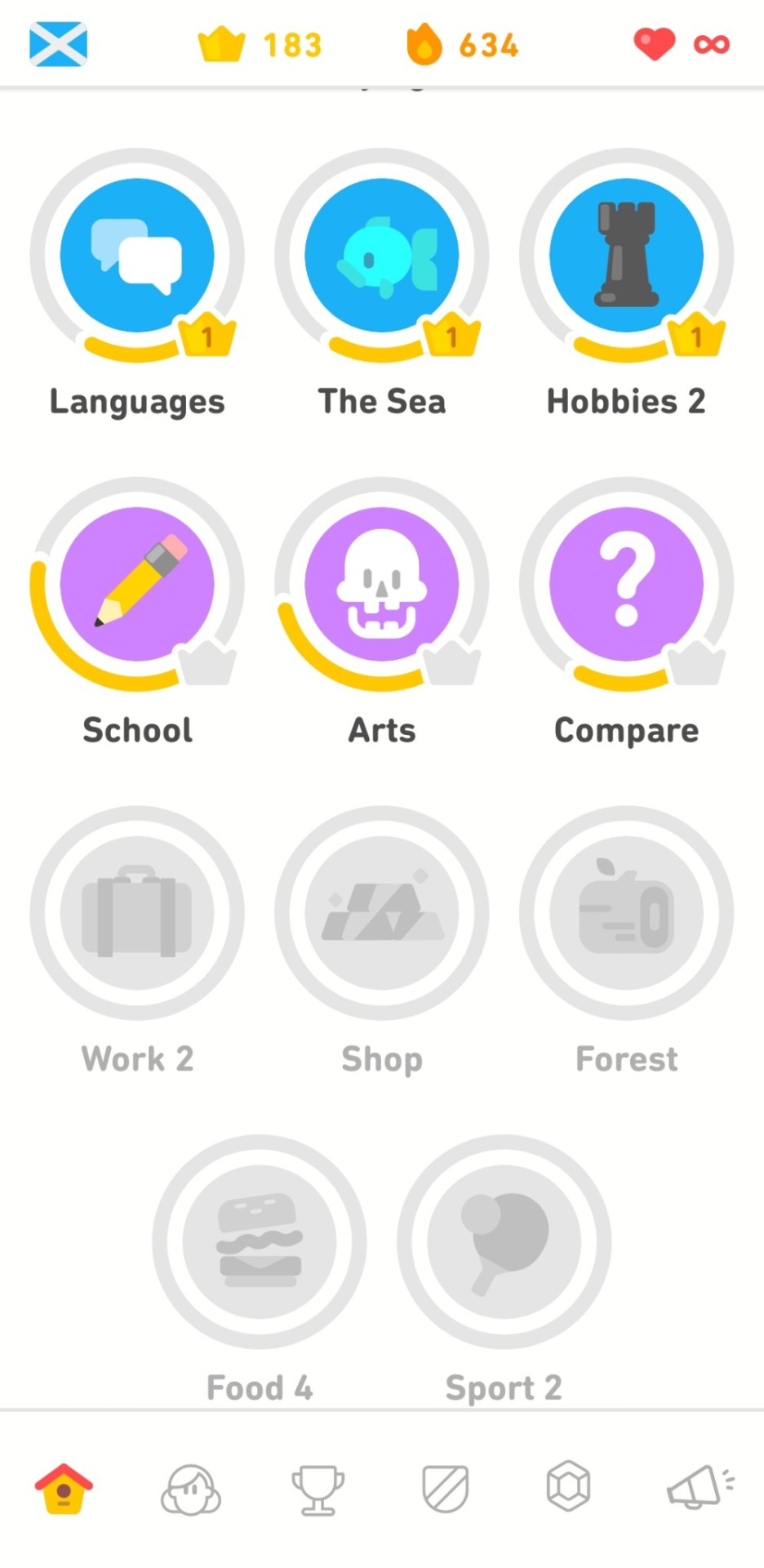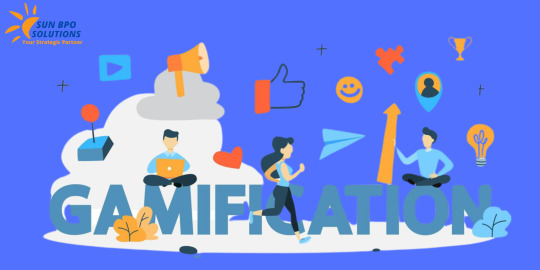#Gamified Learning
Text
Unleashing the Potential of Behavioral Aspects in Gamified Microlearning

In the realm of modern education and corporate training, the amalgamation of gamification principles with microlearning techniques has ushered in a new era of dynamic and engaging learning experiences. At the heart of this transformation lies the understanding and utilization of behavioral aspects, which hold the key to unlocking the full potential of gamified microlearning. This post explores how organizations can leverage behavioral principles to create highly impactful and effective learning experiences that resonate with learners.
Understanding Gamified Microlearning:
Gamified microlearning represents a synergistic blend of gamification elements with the efficiency of microlearning. By infusing game-like features such as challenges, rewards, and progress tracking into bite-sized learning modules, gamified microlearning captivates learners' attention, fosters motivation, and enhances knowledge retention. This approach not only makes learning enjoyable but also promotes continuous skill development and performance improvement.
The Power of Behavioral Aspects in Learning:
Behavioral aspects play a pivotal role in shaping learning experiences and outcomes. By delving into the intricacies of human behavior, organizations can design gamified microlearning experiences that resonate with their audience, drive engagement, and elicit desired behaviors. Drawing insights from psychology, neuroscience, and behavioral economics, organizations can influence learner motivation, decision-making, and learning effectiveness.
Key Behavioral Strategies for Gamified Microlearning:
Motivation and Engagement:
Intrinsic and extrinsic motivation are vital for sustaining learner engagement in gamified microlearning. By setting clear goals, providing meaningful rewards, and offering timely feedback, organizations can ignite learners' passion and commitment to learning.
Behavioral Reinforcement:
Leveraging principles of operant conditioning, organizations can reinforce desired behaviors through positive reinforcement mechanisms embedded within gamified microlearning. By rewarding learners for completing tasks, achieving milestones, or demonstrating desired competencies, organizations can cultivate a culture of continuous improvement and growth.
Cognitive Load Management:
Managing cognitive load is essential for designing gamified microlearning experiences that optimize learning and retention. By presenting information in digestible chunks, minimizing extraneous cognitive load, and providing scaffolding and support, organizations can facilitate deep learning and reduce cognitive overwhelm.
Social Influence:
Harnessing the power of social influence and peer dynamics can amplify the impact of gamified microlearning. By integrating social features such as collaboration, competition, and peer feedback, organizations can foster a sense of community, accountability, and camaraderie among learners, driving engagement and motivation.
Emotional Design:
Recognizing the role of emotions in learning is crucial for creating memorable and impactful gamified microlearning experiences. By evoking positive emotions such as curiosity, excitement, and satisfaction, organizations can enhance learner motivation, attention, and memory encoding, leading to deeper learning and retention.
Implementing Behavioral Strategies in Gamified Microlearning:
Personalization:
Tailoring gamified microlearning experiences to individual learner preferences, interests, and learning styles enhances relevance and engagement. By offering adaptive challenges, personalized feedback, and customized learning paths, organizations can create personalized learning journeys that resonate with learners.
Feedback and Progression:
Providing timely and constructive feedback is essential for guiding learner behavior and facilitating skill development. Incorporating progress tracking, performance metrics, and achievement badges into gamified microlearning fosters a sense of accomplishment and progress, motivating learners to continue their learning journey.
Narrative and Storytelling:
Integrating narrative elements and storytelling techniques into gamified microlearning enhances immersion, emotional engagement, and knowledge retention. By crafting compelling narratives, characters, and scenarios, organizations can captivate learners' imagination, evoke empathy, and facilitate deeper learning experiences.
Case Studies:
Company X:
By implementing gamified microlearning modules focused on sales training, Company X achieved a 30% increase in sales performance and a 20% reduction in training time.
Organization Y:
Through gamified microlearning initiatives targeting compliance training, Organization Y witnessed a 40% improvement in compliance adherence and a 25% decrease in compliance-related incidents.
Conclusion:
By harnessing the power of behavioral aspects in gamified microlearning, organizations can revolutionize their training approach and drive measurable learning outcomes. whether enhancing motivation, reinforcing desired behaviors, or fostering social interaction, understanding human behavior is key to designing gamified microlearning experiences that captivate, educate, and inspire learners. Embrace the potential of behavioral aspects in your gamified microlearning strategy, and embark on a journey of transformative learning and growth.
#Gamified learning#Microlearning#Behavioral psychology#Learning motivation#Cognitive load management#Personalized learning#Educational technology#Training effectiveness#Skill development#Employee engagement
1 note
·
View note
Text
Enhancing Concentration Skills Through Color Prediction Games
In an era dominated by digital distractions and constant stimuli, the need for enhancing concentration skills has become more pressing than ever. As individuals strive to excel in their personal and professional lives, the ability to focus and maintain attention has emerged as a valuable asset. Surprisingly, one unconventional method that has gained attention recently is color prediction games.…

View On WordPress
#Color Prediction Games#Enhancing Concentration Skills#Gamified Learning#Memory Improvement#Mindfulness Training
0 notes
Text
Immersive Edutainment: Exploring the World of E-Learning with Captivate, Unity, VR, and Mozilla Hub. Game-Based Learning and Buddhism, Obviously.
In the fast-evolving world of education, the integration of technology has revolutionized the way we learn and engage with content. As an eLearning instructor, I recently had an exhilarating experience producing and developing an interactive module that blended game-based learning, virtual reality (VR), and Mozilla Hubs to create captivating edutainment content. Join me on this exciting journey…

View On WordPress
#Captivate eLearning#Digital Game Narratives#Digital Learning#E-Learning Solutions#EdTech Innovations#Educational Gamification#educational technology#Engaging eLearning Content#Experiential Learning#Future of Learning#game based learning#Game Design for Education#Game Writing in Education#Gamification in Education#Gamified Assessment#Gamified Instructional Strategies.#Gamified Learning#Immersive Education#Immersive Learning Experiences#Innovative Pedagogy#instructional design#Interactive Learning#Interactive Simulations#Technology-Enhanced Learning#Transformative Education#Virtual Experiential Learning#Virtual Learning Environments#Virtual Reality in Education#VR Learning Applications#VR Simulations
0 notes
Text
Game Mechanics Resource
Working my way through the Nebulas recordings from this past weekend's conference, I'm thrilled to see a track on writing and gaming. Well, maybe less of a "track" and more of a "here, have a few different panels on this topic."
The first panel was moderated by Jonathan Cassie, who does gamified learning. This is a thing I've been working towards for what feels like forever. It's partly how I justify the time I put into gaming (the other part is "learning to record and edit stuff," which, to be fair, I need to really work on improving a lot).
His website links out to something called GameLevelLearn.com which has this great resource called 51 Game Mechanics. This looks REALLY helpful in getting my head around what mechanics I need for this ... thing I'm trying to develop. Watching VintageBeef build Hermitcraft TCG and Tango Tek build Decked Out 2 has been instructive in a lot of ways, but they're building confrontation-based games. Decked Out is closer to what I'm working toward, in that it's PVE (note to self, an essay on "nursing as PVE" could be interesting at some point), but it's single-player. My goal is essentially collaborative PVE. That's my jam, though I prefer for it not to be actual combat. This resource has already given me so many ideas of game mechanics to consider.
I've also got a list of games to explore, both video and tabletop. I may, now that I have a better computer with decent RAM and ethernet capability, try streaming some of it to Twitch. If that continues to fail due to being in the outlying reaches of internet-land, then maybe some of it will become videos. That list, so far, includes
Stray
Breath of the Wild
Elden Ring
Unpacking
Mass Effect
Dragon Age
Grizzly Hills
Journey
I think those are all video games. There are others I've flagged as tabletop or text-based, but there might be one or two in that list that are non-video game formats. I'm inclined to start with Stray, since that story is fairly contained, and also getting to be a cat sounds like fun (and looks like, from those I've watched).
Any thoughts on other games that would be beneficial to explore?
1 note
·
View note
Text
Can the Hooked Protocol (HOOK) make money from Gamified Learning?
Can the Hooked Protocol (HOOK) make money from Gamified Learning?
They built the Hooked Protocol (HOOK) to make money from gamefied learning.
The Hooked Protocol (HOOK) is a gamefied learning solution built to promote Immersive Learning and Inquisitive Learning. To elaborate, Hook builds quiz-to-earn products such as Wild Cash and Mine Town.
In essence, these products pay people to learn about Web3, DeFi, and cryptocurrency. For example, Mine Town rewards…

View On WordPress
#Can the Hooked Protocol (HOOK) make money from Gamified Learning?#Gamified Learning#Hooked Infrastructure#Hooked Protocol (HOOK)#Quiz-To-Earn games#The Hooked Ecosystem#What is Gamified Learning?#What Value Does Hooked Offer?
0 notes
Text
EDIT: You can almost definitely slot most apps into one of the above options.
School app? Slot in with work app.
Transportation app, whether plane, train, or car? Rewards or financial, depending on if they have a rewards program.
Media hosting? I'll admit I should have thought of something like Libby before I made the post, but substack or spotify will fall into social media.
#apps#phones#smartphones#mobile apps#phoenix polls#personally my most recent was a geography game so I can gamify my learning of Countries I Don't Know
165 notes
·
View notes
Text
wow duolingo sucks so bad these days
#it's so gamified and competitive and full of ads and if you run out of hearts you can't even do anything for hours#it's just mindless repetition and learning to recognise the shape of words without having to think about it#anyway i started learning russian on wlingua app and it's 100000 times better#no ads and it actually teaches you grammar alongside vocabulary#with spaced repetition and a logical structure of lessons#and also reading comprehension exercises and writing exercises#so you actually learn how to write the words unlike in duolingo?#well i suppose duolingo also has the option to type with a keyboard#but the bird app sucks in many other ways
140 notes
·
View notes
Text
Um Duolingo, what the hell is this:

As if it wasn't bad enough that the new pathway removed a bunch of my progress (AND takes ages to move onto the next topic so I'm not improving), and that they removed the wordlist so I can no longer keep on top of vocabulary, now I have no idea whether I'm meeting my own daily target or not?S
#Yet more nonsense#PLEASE stop messing with it PLEASE#Stop gamifying it! I do not need to be give little quests and combo bonus and god knows what else#I just want you to provide some basic translation sentences is that so fucking hard#It's harder to supplement with other forms of learning as well#How am I supposed to improve when your stupid pathway has been teaching me the same 4 words & grammar lesson for two months#How am I supposed to practise and learn new vocabulary when a) there isn't a list any more#And b) there's barely enoug new content each day to make it worthwhile#I don't want to play linguistic candy crush I want to learn a language#I don't want little trophies and the opportunity to buy more gems or whatever#Also why are there almost no translation exercises any more- proper ones?#I keep getting given a word bank to choose from with very few options to type out my own instead#It makes it way too easy and I'm not learning anythin just clicking on the words available
13 notes
·
View notes
Text
being highkey judged by @lukabby rn 😔

#jkjk ily girlie <333#BUT YEAH its so fucking funnt cause like#on one hand ik its rly not a good way to learn a language#but personally the gamified aspect RLY helps push me to use it as a practice tool#& thats been fun!#so uh. yeah i got it when it was on sale to feed my language nerd soul#footballisms#lia tag 🚰
13 notes
·
View notes
Text
incredible to be an Adult capable of casting so much aspersion on the topic of the youtube polyglot
#i had such a fascinating talk with my friend about the issues with language learning and MAINTENANCE as by nature a profoundly time#consuming repetitive activity that in many cases will not make you any money#in a gamified ultra fast world#and i think that's the case with so many of these guys and the push to speak as many languages as possible and how they have to make a#career off interesting videos and whatnot#it's really really hard to gamify genuine proficience#but it's also WILD how they pass off a2's as being fluent in something
5 notes
·
View notes
Text
duolingo voice: hän translates to "he or she" :)
me, nonbinary they/them user who knows more than 0 things about finnish:
#this is actually really annoying me#red rambles#im tempted to just find a different language learning app but its gamified enough that i actually really enjoy duolingo#:/#ITS THEY. ITS SINGULAR THEY. WE HAVE THIS WORD TOO#he or she FUCK OFF
13 notes
·
View notes
Text
I'm progressing quite slowly through the course I'm aware but I think it is for the best because it lets me deeply absorb what I'm learning - every section that I've maxed out I DO know very well
I have a system for progressing through duolingo wherein I try to leave a few sections one lesson away from levelling up. When you level up you get an XP boost x2 for 15 minutes so I will start out longer practices by triggering the boost and then completing other lessons until the boost wears off. In doing so I get other sections closer to levelling up so that they will be ready for future boosts & every so often I do one of the legendary levels which are on top of maxing out a section. When you complete a legendary level correctly you can get 40XP whereas a normal level is 20XP so if you complete a legendary level with the boost you get 80XP!!
Anyway all of this is to say that's why my course looks the way it does & this is a nice way to keep the course interesting. It would be very annoying to do 5 levels of one sections all at once, so I stagger the completion of sections across different levels







#you gamify language learning and give it to an autistic person now look what happened#btw i have infinite lives because i tricked the system not because i give them money <3#hack duo! tell him you're in a class! he'll stop showing you ads and give you infinite lives for free!
1 note
·
View note
Text
my prof just explained on the syllabus that he’s included more points in the class than we needed to pass, so we could skip up like?? 20 small assignments/quizzes/participation!! and still get a very high grade!!
the idea was that we could focus on assignments that played to our strengths - only do the participation stuff if we like to talk out loud - only do the quizzes/readings if we want to do the class remotely - only do online discussions if we like to talk and share opinions but struggle with anxiety in class ect.
and that’s cool enough but then he pulled up DnD character sheets with drawings he’d done of these hypothetical student player classes and how our various accessibility needs could be gamified to ‘max out’ different aspects of the class to get high grades and like!!!!!
hell yeah!!!! let’s treat accessibility in higher education not just as a necessity but as the fun, engaging, and creative aspect of learning that it is!!! I love this!!
EDIT: For proper credit or further questions about his system please find my professor on twitter @/kurtishanlon
#his drawings were so cute too and they had titles like ‘silent warrior’ ‘voice of the people’ ect waaaa im so#excited for this class#he also promised to wear a mask and asked us to do the same my mannnn#double shot
76K notes
·
View notes
Text
Microlearning: Designing It Right the First Time | MaxLearn

In today's fast-paced work environment, traditional training methods often fall short of meeting the immediate learning needs of employees. Microlearning Platform, which involves delivering content in small, focused bursts, has emerged as an effective solution. However, the success of microlearning hinges on getting the design right from the start. The MaxLearn blog post, "Microlearning: Design Right the First Time," offers valuable insights into creating effective microlearning content that engages learners and meets organizational goals.
Understanding Microlearning
Microlearning is the process of breaking down complex information into concise, easily digestible modules. These modules typically focus on a single learning objective and can be delivered in various formats, including videos, infographics, quizzes, and interactive scenarios. The key advantage of microlearning is that it fits seamlessly into the busy schedules of employees, allowing them to learn on the go and apply new knowledge immediately.
Steps to Effective Microlearning Design
Identify Clear Learning Objectives
The foundation of any effective training program is a clear understanding of what you want to achieve. Start by defining specific, measurable learning objectives. What skills or knowledge should learners acquire by the end of the module? Clear objectives help in designing focused content that meets the intended outcomes without overwhelming learners with unnecessary information.
Know Your Audience
Understanding your audience is crucial in designing engaging microlearning application content. Consider factors such as the learners' current knowledge level, job roles, and learning preferences. Tailoring the content to meet the specific needs and preferences of your audience increases the relevance and effectiveness of the training.
Create Bite-Sized, Focused Content
Microlearning thrives on brevity and focus. Each module should address a single concept or skill and should be brief enough to be completed in a few minutes. Avoid cramming too much information into one module. Instead, break down complex topics into a series of short, related modules. This approach not only enhances understanding but also aids in better retention and recall.
Use Varied Formats
Diverse formats keep learners engaged and cater to different learning styles. Combine videos, infographics, text, and interactive elements to create a rich learning experience. For instance, a short video can introduce a concept, followed by an infographic summarizing key points, and a quiz to reinforce learning. Interactivity, such as drag-and-drop activities or simulations, can further enhance engagement and understanding.
Incorporate Real-World Scenarios
Applying knowledge to real-world situations is a powerful way to reinforce learning. Incorporate scenarios and examples that are relevant to the learners' roles and challenges. This contextual approach not only makes the content more relatable but also helps learners see the practical application of what they are learning.
Include Assessments and Feedback
Assessments are an integral part of the learning process. Include quizzes, polls, or short exercises at the end of each module to evaluate learners' understanding. Providing immediate feedback helps learners identify areas for improvement and reinforces correct knowledge. Additionally, assessments can give insights into the effectiveness of the content and highlight areas that may need revision.
Ensure Mobile Accessibility
In today's mobile-centric world, ensuring that Microlearning Tools content is accessible on various devices is essential. Design your modules to be mobile-friendly, allowing learners to access training materials anytime, anywhere. This flexibility increases the chances of learners engaging with the content in their own time and at their own pace.
Best Practices for Sustainable Design
Iterative Development: Adopt an iterative approach to content development. Start with a basic version, gather feedback, and make necessary improvements. This process ensures that the content remains relevant and effective over time.
Continuous Improvement: Regularly update your microlearning modules to reflect new information, technologies, or changes in organizational goals. Continuous improvement keeps the content fresh and ensures that it remains aligned with learners' needs.
Engagement and Motivation: Use gamification elements, such as points, badges, and leaderboards, to enhance engagement and motivation. Recognizing and rewarding learners' progress fosters a positive learning culture and encourages continued participation.
Conclusion
Microlearning Authoring Tools right the first time is essential for its success. By focusing on clear objectives, understanding your audience, creating concise and engaging content, and incorporating assessments and real-world scenarios, you can create effective microlearning modules that meet organizational goals and enhance employee performance. Embracing these best practices will ensure that your microlearning initiatives are not only impactful but also sustainable in the long run.
#Microlearning Platform#MicrolearningPlatform#Microlearning Courses#MicrolearningCourses#Microlearning Platforms#MicrolearningPlatforms#microlearning application#microlearningapplication#microlearning authoring tools#microlearningauthoringtools#microlearning tools#microlearningtools#microlearning software#microlearningsoftware#micro learning courses#microlearningcourses#micro learning platform#microlearningplatform#AI Powered Authoring Tool#AIPoweredAuthoringTool#course creation platform#coursecreationplatform#course authoring tools#courseauthoringtools#gamified learning platform#gamifiedlearningplatform#adaptive learning technology#adaptivelearningtechnology#ai powered learning platform#aipoweredlearningplatform
0 notes
Text
Navigating Risk and Assessment with Confidence: The Power of MaxLearn Microlearning Platform

Introduction:
In today's dynamic business landscape, organizations face a myriad of risks that can impact their operations, finances, and reputation. From operational and financial risks to compliance and supply chain risks, navigating these challenges requires a proactive approach to risk management. Enter MaxLearn, a cutting-edge microlearning platform that empowers organizations to mitigate risks effectively through targeted training and development initiatives. In this article, we explore how MaxLearn's microlearning platform is revolutionizing risk-focused training, enabling organizations to build resilient risk management frameworks and achieve sustainable success.
Understanding Risk-Focused Training:
Risk-focused training is a proactive approach to developing the knowledge, skills, and mindset necessary to identify, assess, and mitigate risks effectively. Unlike traditional training methods that often focus on theoretical concepts and generic principles, risk-focused training is tailored to the specific needs and challenges of individual organizations. Whether it's operational risk management, financial risk management, or compliance risk management, risk-focused training equips employees with the tools and techniques they need to navigate uncertainty with confidence.
MaxLearn's Microlearning Platform: A Catalyst for Change
MaxLearn's microlearning platform serves as a catalyst for change, enabling organizations to deliver risk-focused training that is engaging, accessible, and effective. With its bite-sized modules and on-demand access, MaxLearn's platform allows employees to learn at their own pace, anytime, anywhere. Whether it's a quick refresher on risk assessment techniques or a comprehensive course on enterprise risk management, MaxLearn's microlearning platform offers a wide range of resources to support continuous learning and development.
Risk-Specific Training: Addressing Unique Challenges
MaxLearn's microlearning platform offers a comprehensive suite of risk-specific training courses designed to address the unique challenges faced by organizations across industries. From operational risk management and financial risk management to project risk management and compliance risk management, MaxLearn's platform covers a wide range of topics to meet the diverse needs of learners. Each course is developed by industry experts and tailored to provide practical insights and actionable strategies for managing specific types of risks.
Operational Risk Management: Building Resilience
Operational risk management is a critical component of any organization's risk management framework, encompassing the identification, assessment, and mitigation of risks arising from internal processes, systems, and human error. MaxLearn's microlearning platform offers specialized courses on operational risk management, covering topics such as risk identification, risk assessment, control implementation, and incident response. By equipping employees with the knowledge and skills they need to proactively manage operational risks, MaxLearn's platform helps organizations build resilience and adaptability in the face of uncertainty.
Financial Risk Management: Safeguarding Assets
Financial risk management is essential for organizations looking to safeguard their assets and protect against market volatility, credit risk, and liquidity risk. MaxLearn's microlearning platform offers a range of courses on financial risk management, covering topics such as risk measurement, portfolio optimization, hedging strategies, and regulatory compliance. Whether it's for finance professionals seeking to enhance their skills or non-finance employees looking to gain a better understanding of financial risk management principles, MaxLearn's platform provides accessible and actionable training resources for all learners.
Project Risk Management: Ensuring Success
Project risk management is crucial for organizations undertaking complex initiatives, ensuring that potential risks are identified, assessed, and mitigated throughout the project lifecycle. MaxLearn's microlearning platform offers specialized courses on project risk management, covering topics such as risk identification techniques, risk assessment methodologies, risk response planning, and risk monitoring and control. By providing project teams with the knowledge and tools they need to effectively manage risks, MaxLearn's platform helps organizations minimize project delays, cost overruns, and other adverse outcomes.
Risk Mitigation Strategies: Taking Action
Risk mitigation strategies are essential for organizations looking to proactively manage risks and minimize their impact on business operations. MaxLearn's microlearning platform offers practical courses on risk mitigation strategies, covering topics such as risk avoidance, risk reduction, risk transfer, and risk acceptance. Whether it's through case studies, simulations, or interactive exercises, MaxLearn's platform provides learners with the opportunity to explore different risk mitigation techniques and apply them to real-world scenarios.
Risk Assessment Training: Enhancing Skills
Risk assessment is a fundamental aspect of risk management, enabling organizations to identify and prioritize risks based on their likelihood and impact. MaxLearn's microlearning platform offers specialized courses on risk assessment training, covering topics such as risk identification techniques, risk analysis methodologies, risk scoring criteria, and risk prioritization strategies. By enhancing employees' risk assessment skills, MaxLearn's platform helps organizations make informed decisions and allocate resources effectively to mitigate the most significant risks.
Compliance Risk Management: Staying Compliant
Compliance risk management is essential for organizations operating in highly regulated industries, ensuring that they adhere to legal and regulatory requirements and avoid potential penalties and reputational damage. MaxLearn's microlearning platform offers specialized courses on compliance risk management, covering topics such as regulatory frameworks, compliance monitoring, internal controls, and audit procedures. Whether it's for compliance officers, legal professionals, or frontline employees, MaxLearn's platform provides accessible and up-to-date training resources to help organizations stay compliant and mitigate compliance-related risks.
Risk Management in Supply Chain: Ensuring Resilience
Supply chain risk management is critical for organizations looking to maintain continuity and resilience in the face of supply chain disruptions, such as natural disasters, geopolitical events, and supplier failures. MaxLearn's microlearning platform offers specialized courses on risk management in the supply chain, covering topics such as supply chain mapping, risk assessment methodologies, supplier risk management, and business continuity planning. By equipping supply chain professionals with the knowledge and tools they need to identify, assess, and mitigate supply chain risks, MaxLearn's platform helps organizations build resilience and agility in their supply chains.
Conclusion:
MaxLearn's microlearning platform is revolutionizing risk-focused training, enabling organizations to build resilient risk management frameworks and achieve sustainable success. With its comprehensive suite of risk-specific training courses, accessible delivery format, and practical, actionable content, MaxLearn's platform empowers learners to navigate uncertainty with confidence, whether they're managing operational risks, financial risks, project risks, compliance risks, or risks in the supply chain. By harnessing the power of microlearning, MaxLearn is helping organizations build a culture of risk awareness, proactive risk management, and continuous improvement, driving value and resilience across industries and sectors.
#risk focused training#Risk Specific Training#operational risk management#risk and assessment#assessment of the risk#enterprise risk management#risk management process#risk management course#operational risk management framework#financial risk management#project risk management#risk mitigation strategies#risk assessment training#compliance risk management#risk management in supply chain#Microlearning Platform#Microlearning Courses#Microlearning Platforms#microlearning application#microlearning authoring tools#microlearning tools#microlearning software#micro learning courses#micro learning platform#AI Powered Authoring Tool#course creation platform#course authoring tools#gamified learning platform#adaptive learning technology#ai powered learning platform
0 notes
Text
Gamification for Growth: Turning Customer Engagement into a Fun and Rewarding Experience

Remember that childhood feeling of pure joy when you finally beat a challenging level in your favorite video game, or the thrill of climbing the leaderboard in a mobile app? That's the power of play in action. Games have a captivating ability to motivate, engage, and keep us coming back for more. This very same power is now being harnessed by businesses through the art of gamification.
Gamification is the strategic application of game mechanics and principles in non-game contexts. In simpler terms, it's about incorporating elements of games - points, badges, levels, challenges - into everyday experiences to make them more fun, engaging, and ultimately, more rewarding. Businesses are increasingly recognizing the potential of gamification as a powerful tool to transform customer engagement and drive growth.

So, what makes gamification so effective? The answer lies in our inherent psychological drives. Gamified experiences tap into both intrinsic and extrinsic motivation. Completing tasks in a gamified system can be inherently satisfying, providing a sense of accomplishment and mastery. But gamification also leverages extrinsic motivators, like points, badges, and leaderboards, to encourage participation and desired behaviors.
The desire for achievement is a powerful motivator. Gamification fuels this desire by offering users a clear path to success through progressive levels and challenges. Earning points and badges provides tangible recognition of progress, fostering a sense of pride and accomplishment. For example, a fitness app that awards badges for achieving workout goals not only motivates users to exercise but also celebrates their achievements.
Healthy competition is another powerful motivator that gamification effectively utilizes. Leaderboards pit users against each other in a friendly competition, encouraging them to strive for better performance. This competitive spirit can significantly boost user engagement and achievement. Imagine a language learning app that displays a leaderboard showcasing users with the most completed lessons. This playful competition can motivate users to learn more and climb the ranks.
Beyond individual achievement, gamification can also foster a sense of community and shared goals. Gamified experiences often connect users through collaborative challenges, team competitions, and virtual communities. This fosters a sense of belonging and encourages users to support and learn from each other.
Gamification in Action: Real-World Examples
Let's take a look at some real-world examples of successful gamification in action:
Loyalty programs: Many businesses have gamified their loyalty programs by awarding points for purchases, offering badges for reaching milestones, and unlocking exclusive rewards for high-tier members. This system incentivizes repeat purchases and builds customer loyalty.
Fitness Apps: Fitness apps heavily leverage gamification mechanics. They award users points for completing workouts, offer badges for achieving fitness goals, and create virtual communities where users can compete in challenges or motivate each other.
Educational Platforms: Educational platforms for kids and adults alike are incorporating gamification elements to make learning more engaging. Points, badges, and progress bars keep users motivated, while interactive games and challenges transform learning from a chore into a fun and rewarding experience.
Creating Your Gamified Experience: A Practical Guide
So, how can you leverage gamification for your business? Here's an orderly approach to help you get going:
Define Your Goals: The first step is to identify your specific objectives for gamification. Do you want to increase user engagement, drive product adoption, collect valuable user data, or achieve a combination of these goals? Your gamification strategy will be guided by a well-defined aim.
Know Your Audience: It's critical to comprehend who your target audience is. What are their motivations, needs, and preferred game mechanics? Tailor your gamification strategy to resonate with their interests and ensure a seamless user experience.
Choose the Right Mechanics: Not all game mechanics are created equal. Select appropriate elements that integrate well with your existing platform or program. Consider using points, badges, levels, leaderboards, virtual rewards, or challenges depending on your goals and audience.
Ensure Clear Rules and Rewards: Gamification thrives on clarity. Clearly define the rules of engagement, outline the scoring system, and showcase the rewards users can earn. Make sure the rewards are meaningful and incentivize the desired user behavior.
Monitor and Evaluate: Don't just put it in and forget it! Actively monitor the performance of your gamified experience. Track user engagement, analyze data on which mechanics are most effective, and be prepared to adjust and adapt your strategy based on the results.
Conclusion
Gamification offers a powerful way to transform customer engagement from a passive experience into a fun and rewarding journey. By incorporating game mechanics and fostering a sense of play, businesses can motivate users, build loyalty, and ultimately
#gamification#gamified learning management system#gamificación#content#spicy content#audience#loyalty program
0 notes